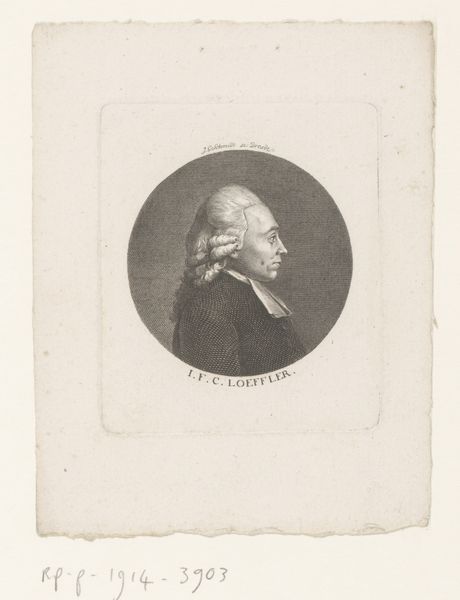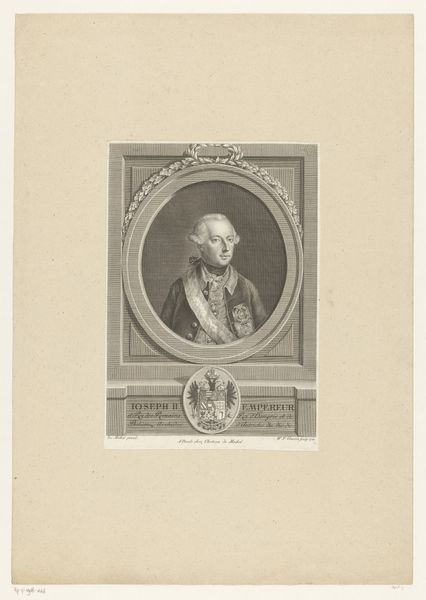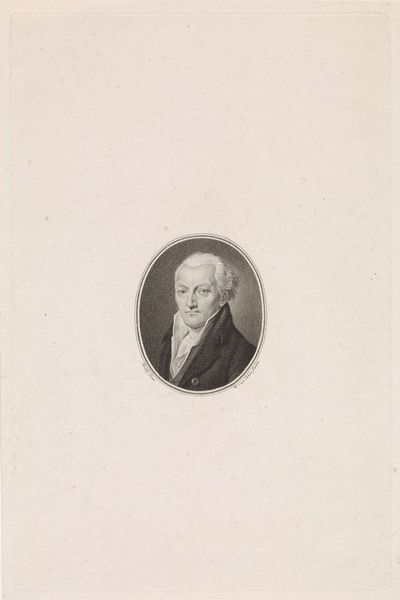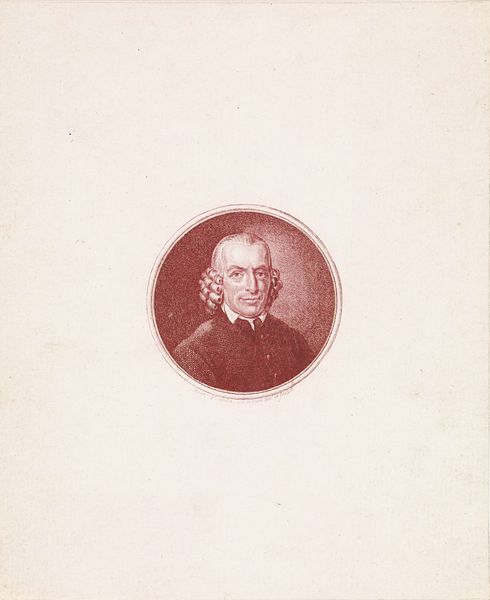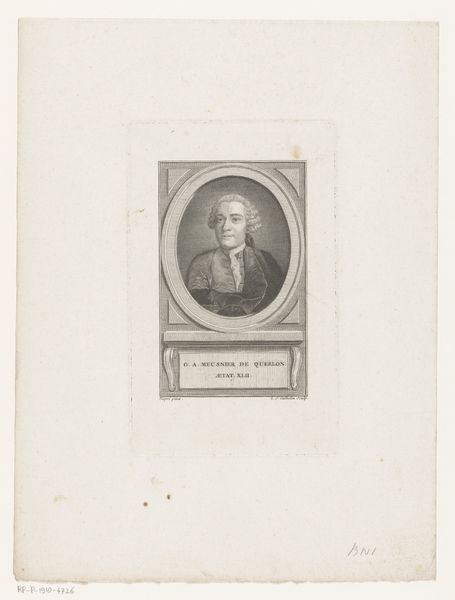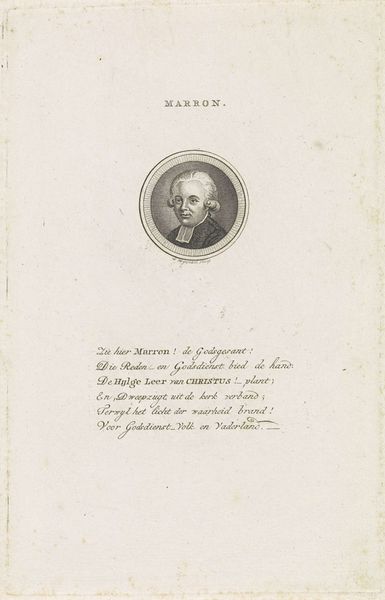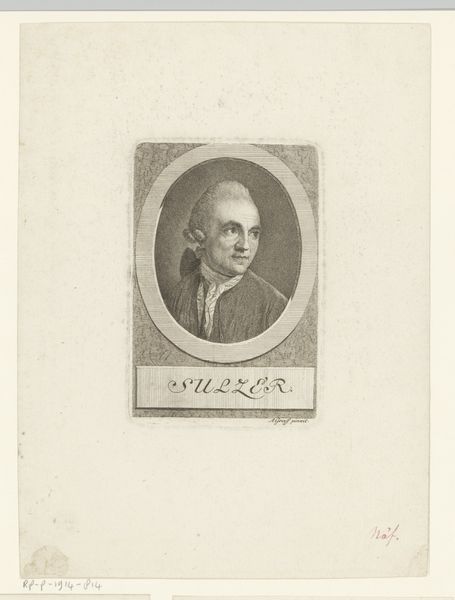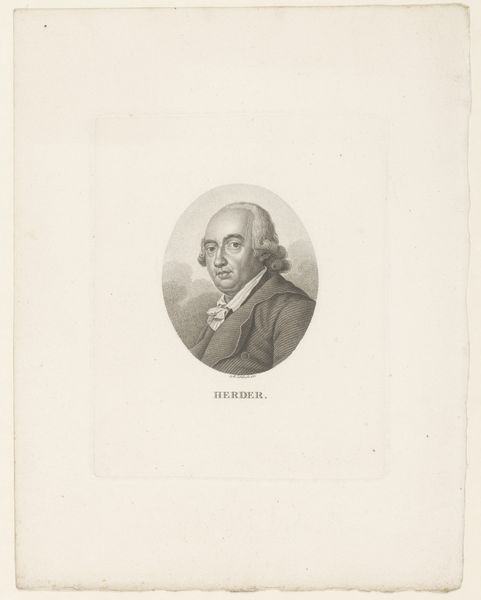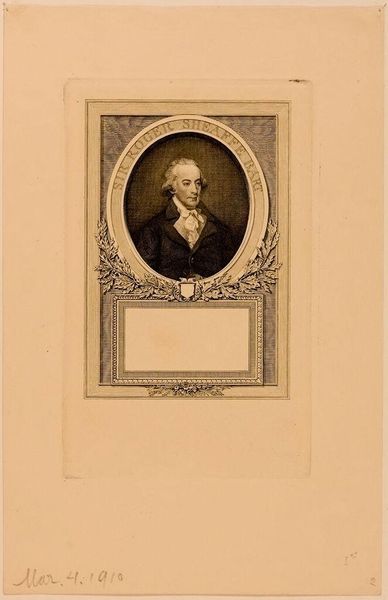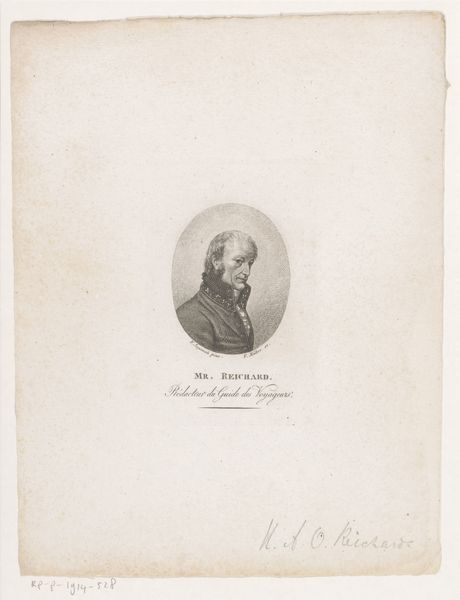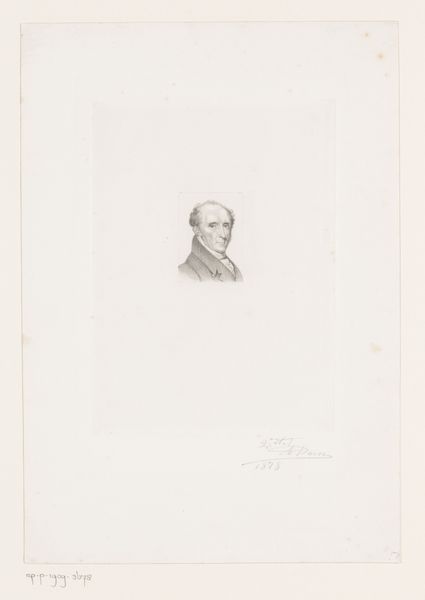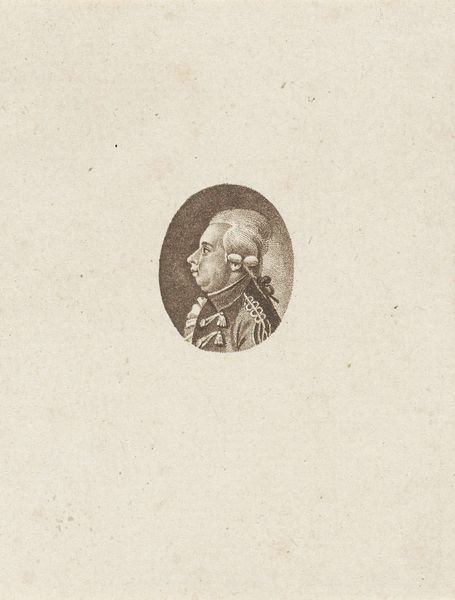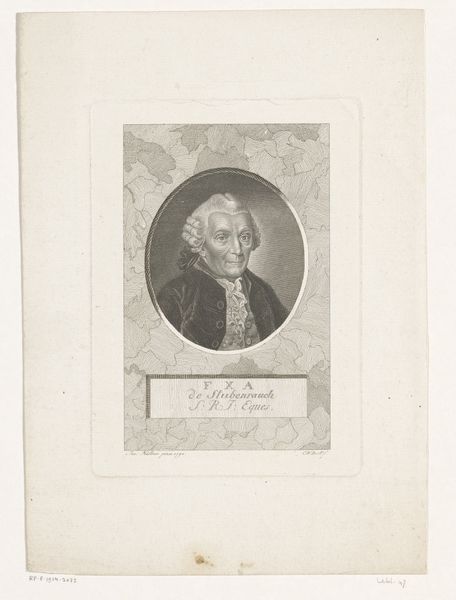
Dimensions: height 217 mm, width 138 mm
Copyright: Rijks Museum: Open Domain
Curator: Looking at this piece, one notes how Wijsman created “Portret van Johannes Gerardus Luyken”, circa 1794-1796, using the engraving technique. The precision achieved through this printmaking medium is quite compelling. What's your initial impression? Editor: Austere, formal, but contained, wouldn’t you say? The severe neoclassical frame seems to restrict this “Fiscal Luyken” whose name is centered at the top. There's a powerful suggestion of both societal order and the personal constraints it imposes. Curator: Agreed. Wijsman’s choice to portray Luyken via engraving suggests deliberate control over representation. Printmaking at this time signified not just artistry but a means to disseminate and replicate images, making them accessible. Editor: Precisely. Consider Luyken's role: a fiscal officer, enmeshed in governance. This engraving normalizes and elevates that class through dissemination to project power through the efficient visual distribution and replication of his image within Dutch society. Curator: The hatching and cross-hatching used in engraving build a tonal depth that suggests volume despite its essential two-dimensionality. Notice how Wijsman utilizes these lines to articulate the contours of Luyken's face. Editor: Which brings us to physiognomy—popular then—linking outer appearance to inner character, doesn’t it? This engraved portrait, carefully rendered, conveys presumed traits of seriousness, responsibility. Does the engraver reproduce existing power dynamics of gender, race, and class by affirming Luyken’s official status through what Walter Benjamin famously called its "aura?” Curator: Definitely. Furthermore, looking at the material reality of this print as object shifts our focus away solely from representation toward a whole system of production. Consider Wijsman’s craft… the training, the tools...the embodied labor. Editor: I would add to that by stating that in deconstructing these traditional artworks in art history by examining these artifacts through labor, gender and societal context, we're allowing more perspectives in its reception. It lets us create spaces where different histories may connect meaningfully to challenge orthodoxies of interpretation. Curator: Indeed, such nuanced understanding reveals the convergence of process, portrayal, and its broad social context... Editor: ...yielding an evolved vision of Dutch visual history, its mechanisms of power, and ongoing dialogues shaping our grasp of portraiture to the present day.
Comments
No comments
Be the first to comment and join the conversation on the ultimate creative platform.
